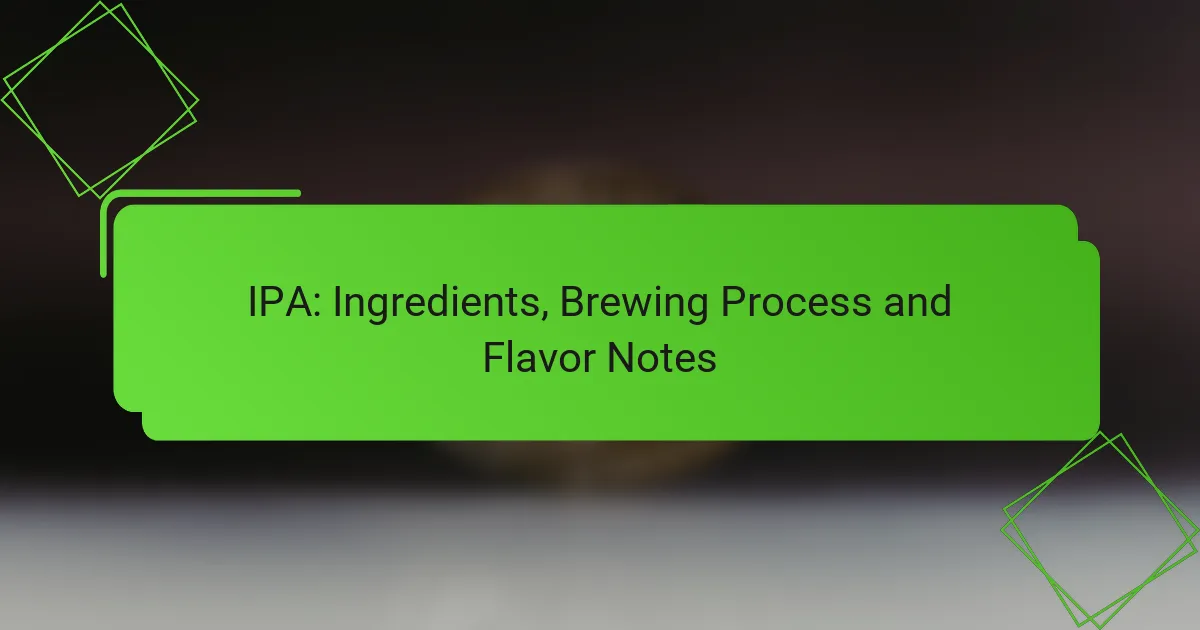Sour beer brewing is an intricate art that combines traditional fermentation techniques with the use of wild yeast strains and barrel aging. By carefully selecting ingredients such as base malts, hops, and specialty grains, brewers can craft unique flavor profiles that define this distinctive style. Variations in fermentation time, fruit additions, and barrel types further enhance the complexity and diversity of sour beers, making each brew a unique experience.

What are the best techniques for sour beer brewing?
The best techniques for sour beer brewing include traditional fermentation methods, the use of wild yeast strains, barrel aging, blending, and temperature control. Each technique contributes unique flavors and characteristics to the final product, allowing brewers to create a diverse range of sour beers.
Traditional fermentation methods
Traditional fermentation methods for sour beer often involve spontaneous fermentation, where wild yeast and bacteria from the environment inoculate the wort. This method can take several months to years, resulting in complex flavors that develop over time.
Another approach is kettle souring, where lactobacillus is added to the wort before boiling. This method is faster, typically taking a few days, and allows for more control over the sourness level.
Use of wild yeast strains
Wild yeast strains, such as Brettanomyces, play a crucial role in sour beer brewing. These yeasts can produce unique flavors and aromas, often described as funky or earthy, which contribute to the beer’s complexity.
When using wild yeast, it’s essential to manage fermentation conditions carefully, as these strains can behave unpredictably. Consider starting with small batches to understand how different strains affect the final product.
Barrel aging techniques
Barrel aging is a popular technique for sour beer, as it allows for interaction with wood and previous contents, which can impart additional flavors. Common barrel types include bourbon, wine, and rum barrels, each offering distinct characteristics.
During barrel aging, sour beers can develop depth and complexity, but this process requires patience. Aging can last from several months to several years, depending on the desired flavor profile.
Blending for complexity
Blending different batches of sour beer is an effective way to achieve complexity and balance in flavor. Brewers often blend young and old beers to combine fresh acidity with mature, nuanced flavors.
When blending, consider the individual characteristics of each batch, such as sourness, fruitiness, and woodiness. A systematic approach, such as keeping detailed notes, can help refine the blending process over time.
Temperature control strategies
Temperature control is vital in sour beer brewing, as it influences yeast and bacteria activity. Maintaining a stable fermentation temperature can help achieve consistent sourness and flavor development.
For traditional fermentation, aim for temperatures between 20-25°C (68-77°F) for optimal wild yeast activity. In kettle souring, slightly warmer temperatures can encourage lactobacillus growth, typically around 30-40°C (86-104°F).

What ingredients are essential for sour beer?
Essential ingredients for sour beer include base malts, hops, specialty grains, and specific yeast and bacteria. Each component plays a crucial role in developing the unique flavors and characteristics that define sour styles.
Base malts for sour beer
Base malts are the foundation of sour beer, providing the necessary fermentable sugars. Common choices include pale malt, pilsner malt, and wheat malt, which contribute to the beer’s body and flavor profile. A typical grain bill might consist of 70-80% base malt to ensure adequate sugar content for fermentation.
When selecting base malts, consider the desired color and flavor intensity. For lighter sour beers, opt for pale or pilsner malts, while darker malts can add complexity and depth to more robust styles.
Hops selection for sour styles
Hops in sour beers are often used sparingly, primarily for balance rather than bitterness. Low-alpha hops such as Saaz or Hallertau are popular choices, as they impart subtle floral and herbal notes without overwhelming the sour character. Aim for a hopping rate of around 10-20 IBUs to maintain the focus on sourness.
Timing is crucial; adding hops late in the boil or during fermentation can enhance aroma without adding significant bitterness. Avoid high-alpha hops that can dominate the flavor profile.
Specialty grains and adjuncts
Specialty grains and adjuncts can enhance the complexity of sour beers. Options like Munich malt, caramel malt, or oats can add sweetness and mouthfeel, while adjuncts such as fruit, spices, or honey can introduce unique flavors. Consider using 10-20% specialty grains to complement the base malts.
When adding adjuncts, timing is essential. Incorporate fruits during fermentation to allow for natural flavors to develop, while spices may be added towards the end of the boil for a more pronounced impact.
Yeast and bacteria for souring
Yeast and bacteria are critical for creating the sour profile in these beers. Common yeast strains include Saccharomyces for primary fermentation, while Lactobacillus and Brettanomyces are often used for souring. A mixed fermentation approach can yield complex flavors and aromas.
When sourcing yeast and bacteria, consider the fermentation temperature and duration. Lactobacillus typically thrives at warmer temperatures, while Brettanomyces may require longer aging periods to develop its signature funk. Aim for a fermentation timeline of several weeks to months for optimal sourness.

How do flavor variations occur in sour beer?
Flavor variations in sour beer arise from several factors, including fermentation time, fruit additions, and the types of barrels used. Each of these elements can significantly impact the final taste profile, creating a diverse range of flavors and aromas.
Impact of fermentation time
Fermentation time plays a crucial role in developing the flavors of sour beer. Longer fermentation periods typically lead to more pronounced sourness and complexity, as wild yeast and bacteria continue to interact with the sugars in the wort. For example, a fermentation time of several months can produce a more nuanced flavor compared to a quick fermentation of just a few weeks.
However, brewers must balance the benefits of extended fermentation with the risk of off-flavors. Regular sampling during fermentation can help identify the optimal time to stop the process, ensuring the desired flavor profile is achieved without unwanted characteristics.
Influence of fruit additions
Adding fruit to sour beer can enhance its flavor profile and introduce new dimensions. Common fruits used include cherries, raspberries, and peaches, each contributing unique flavors and acidity levels. For instance, raspberries can add a tartness that complements the sourness, while peaches may impart a sweeter, more aromatic quality.
When adding fruit, timing is essential. Introducing fruit during fermentation can lead to a more integrated flavor, while adding it post-fermentation can create a fresher, more pronounced fruit character. Brewers should experiment with different fruits and addition methods to find the right balance for their sour beer.
Role of barrel types
The type of barrel used for aging sour beer significantly influences its flavor. Different woods, such as oak, impart distinct characteristics, while previously used barrels can introduce residual flavors from previous contents, like wine or spirits. For example, a bourbon barrel may add notes of vanilla and caramel, enhancing the complexity of the sour beer.
Brewers should consider the barrel’s age and previous use when selecting it for sour beer aging. New barrels may provide stronger wood flavors, while older barrels might contribute subtler nuances. Experimentation with various barrel types can lead to unique flavor profiles that distinguish a brewer’s sour beer from others in the market.

What are the popular sour beer styles in the United States?
In the United States, popular sour beer styles include Berliner Weisse, Gose, and Lambic. Each style has distinct characteristics, fermentation methods, and flavor profiles that appeal to a wide range of beer enthusiasts.
Berliner Weisse
Berliner Weisse is a low-alcohol, tart wheat beer that originates from Germany. It typically has an alcohol content of around 3-4% and is known for its refreshing sourness, often complemented by fruit additions like raspberry or woodruff syrup.
When brewing Berliner Weisse, a mixed fermentation process is common, using both traditional yeast and lactic acid bacteria. This results in a light, effervescent beer with a crisp finish, making it an excellent choice for warm weather.
Gose
Gose is a unique sour beer that combines a salty flavor with a tart profile, originating from Germany as well. It usually contains coriander and salt, which enhance its refreshing qualities, and has an alcohol content of about 4-5%.
Brewing Gose involves a process that includes lactic acid fermentation, which contributes to its sourness. The addition of salt can vary, so brewers should experiment to find the right balance that complements the beer’s overall flavor without overpowering it.
Lambic
Lambic is a traditional Belgian sour beer that undergoes spontaneous fermentation, allowing wild yeast and bacteria from the environment to influence its flavor. This style can have a wide range of alcohol content, typically between 5-8%.
Brewing Lambic requires patience, as it can take months or even years to develop its complex flavors. Common variations include fruit Lambics, which incorporate ingredients like cherries or peaches, creating a rich, fruity profile that appeals to many beer lovers.



